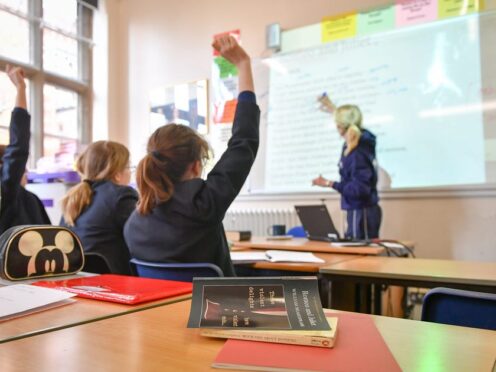
The proportion of MPs educated in comprehensive schools has reached a record high, an analysis has suggested.
Nearly two in three (63%) MPs elected attended non-selective state schools, up from 54% in 2019 and 52% in 2017, according to the Sutton Trust charity.
The social mobility charity, which has been collecting data on the education backgrounds of elected politicians since 2005 – said it is the highest proportion of comprehensively educated MPs on record.
Nearly a quarter (23%) of MPs were educated at a private school, down from 29% at both general elections in 2019 and 2017.
The analysis, which looks at the secondary school where an MP attended for the majority of the time between the ages of 11 and 16, also found that 13% of MPs attended a grammar school, down from 16% in 2019 and 17% in 2017.
There has been a “sea change” in the education backgrounds of the governing party in the Commons following the General Election, the Sutton Trust said.
Nearly three in four (73%) Labour MPs attended comprehensive schools, compared to 42% of Conservative MPs elected in 2019, the research found.
Around 7% of the population is educated at private schools, which is in contrast to 46% of Conservative MPs and 15% of Labour MPs elected.
Of the 126 MPs who went to private schools, four went to Eton – compared to 11 in 2019, according to the analysis.
Despite the change, the majority of MPs elected were still educated at the most selective and prestigious universities across the country.
The analysis found that 55% attended Russell Group universities (54% in 2019) – including 20% who went to Oxford or Cambridge (21% in 2019).
Overall nine in 10 MPs attended university, which is up on 88% in 2019.
Nick Harrison, chief executive of the Sutton Trust, said: “This election represents a sea change in the education backgrounds of the governing party in the new House of Commons, with around three-quarters of Labour MPs having attended comprehensive schools.
“The proportion of all MPs educated at comprehensives has also increased markedly, making this parliament the most representative of the UK’s schooling ever recorded.
“This matters because people are naturally shaped by their background and life experiences, so it’s important for society that our politicians better reflect the reality of the wider population.
“However, there’s still a long way to go before the Commons is truly representative of the 88% of the population who went to comprehensive schools.
“If parliament is to truly reflect the nation, it’s vital that more is done to enable talented people from all backgrounds to get the opportunity to become MPs.”
As of Friday afternoon, the researchers had data on the known school backgrounds of 541 MPs (83%) – and the known university backgrounds of 611 MPs (94%) – which were used for the analysis.
Information on MPs’ educational backgrounds was found primarily from public sources, but where information was not publicly available, the researchers contacted candidates and their offices to provide data. Some did not reply or declined to provide the information.
Lee Elliot Major, professor of social mobility at the University of Exeter, said: “These figures highlight a seismic moment in political history – in terms of schooling at least, this Parliament will be more reflective of the people it is intended to serve than any in recent history.
“The hope is that our MPs will better understand and address the huge generational challenges people are now facing in their daily lives, in a society characterised by growing poverty and inequalities.”

Enjoy the convenience of having The Sunday Post delivered as a digital ePaper straight to your smartphone, tablet or computer.
Subscribe for only £5.49 a month and enjoy all the benefits of the printed paper as a digital replica.
Subscribe